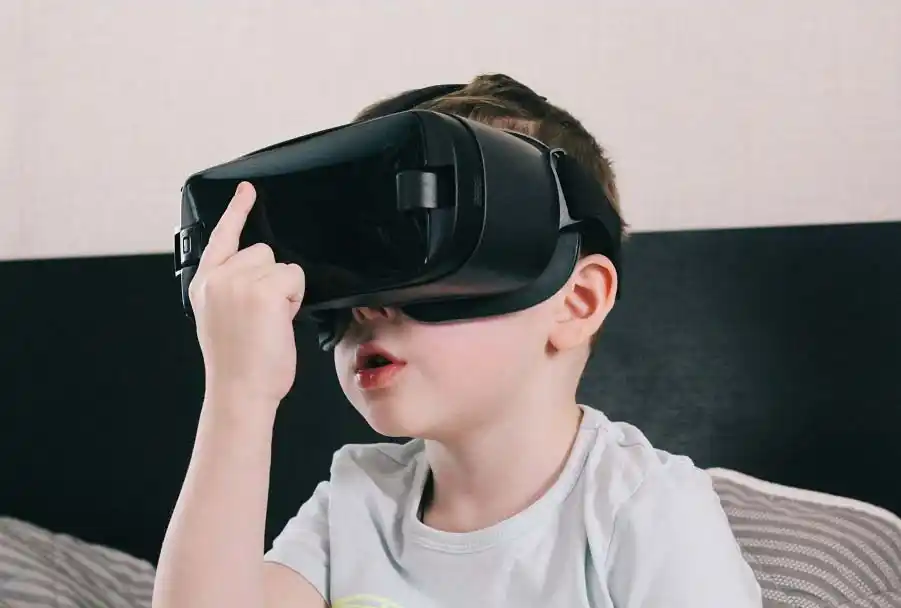In the bustling realm of technology, virtual reality (VR) stands as a beacon of innovation, promising boundless adventures and immersive escapades within the confines of our living rooms. Yet, beneath the initial fervor lies a puzzling trend: children, once captivated by the promise of VR, are now disenchanted, their interest waning. As the VR landscape evolves, the conundrum deepens, prompting us to explore why kids grow bored with VR goggles and how industry behemoths like Apple and Meta can mend this digital disconnect.
The Rise and Plateau of VR Dreams
When VR first leaped onto the scene, it was heralded as the next frontier in entertainment—a gateway to realms uncharted and experiences unprecedented. The allure of traversing virtual reality (VR) landscapes and engaging in daring exploits ignited imaginations worldwide. However, as time trudged forward, the initial fervor faltered, particularly among our youngest enthusiasts.
Cracking the Code of Kids’ VR Apathy
Several enigmatic factors contribute to children’s disenchantment with VR goggles:
Content Conundrum:
While glimpses of awe-inspiring VR experiences tantalize, the overall content library remains shackled by a lack of diversity, particularly concerning offerings tailored for young minds. Without a kaleidoscope of engaging and age-appropriate content, children swiftly lose interest in the VR wonderland.
2. Technical Tethers:
Many VR systems demand robust hardware to deliver seamless and lifelike experiences. Yet, these high-end setups often carry a weighty price tag, rendering them inaccessible to many families. Moreover, even with cutting-edge hardware, VR technology grapples with issues like motion sickness and discomfort, particularly for fledgling adventurers.
3. Social Solitude:
VR’s solitary nature presents a paradox—while it transports users to vibrant realms, it severs the tether of social interaction. When children don VR headsets, they embark on solitary odysseys, estranged from the camaraderie they relish. Although multiplayer VR experiences exist, they demand synchronization among friends with compatible gear, further limiting accessibility.
4. Physical Puzzles:
VR imposes spatial constraints, urging users to remain anchored or within prescribed boundaries to avert mishaps. For vivacious children accustomed to boundless frolic, this restriction feels stifling and contrived, tarnishing the allure of VR.
5. Attention Abrasion:
Children, bearers of fleeting attention spans, yearn for perpetual stimulation. VR, while immersive, may falter in sustaining their interest over prolonged periods, inviting ennui and apathy.
Charting a Course for Apple and Meta
As paragons of innovation and user-centric design, Apple and Meta possess the power to invigorate the VR landscape for children. Here’s a roadmap they could traverse:
Crafting Captivating Content:
Apple and Meta could channel their creative prowess into crafting a kaleidoscope of high-quality VR experiences tailored for young audiences. These experiences should be not just entertaining, but also educational and interactive, catering to diverse age groups.
2. Pioneering Accessibility:
Both juggernauts could engineer more affordable VR solutions without compromising on quality. By harnessing their expertise in hardware design, they could democratize access to VR, ushering it into the homes of families worldwide.
3. Fostering Social Fusion:
Apple and Meta could orchestrate a convergence of VR and social dynamics, fostering interactions among children in virtual reality. This could entail multiplayer games, virtual hangouts, and collaborative endeavors that transcend physical barriers.
4. Elevating Comfort and Safety:
Acknowledging the primacy of comfort and safety in VR, Apple and Meta could prioritize user-friendly interfaces and ergonomic designs. Advanced motion tracking technologies could mitigate discomfort and alleviate the specter of motion sickness, especially among tender adventurers.
5. Championing Physical Engagement:
To surmount physical constraints, Apple and Meta could infuse VR experiences with elements that encourage movement and physical activity. By blending VR with fitness-oriented games and interactive quests, they could transform sedentary sessions into dynamic escapades that promote holistic well-being.
Epilogue: A Voyage Unfolds
While children may presently regard VR goggles with indifference, the horizon brims with promise. With Apple and Meta at the helm, the VR odyssey is poised for resurgence, heralding immersive experiences that kindle wonder, stoke creativity, and unfurl the tapestry of imagination for generations to come. As technology charts new frontiers, the saga of VR beckons, and with the right compass in hand, children may soon rediscover the allure of virtual realms—a journey both thrilling and transformative.

